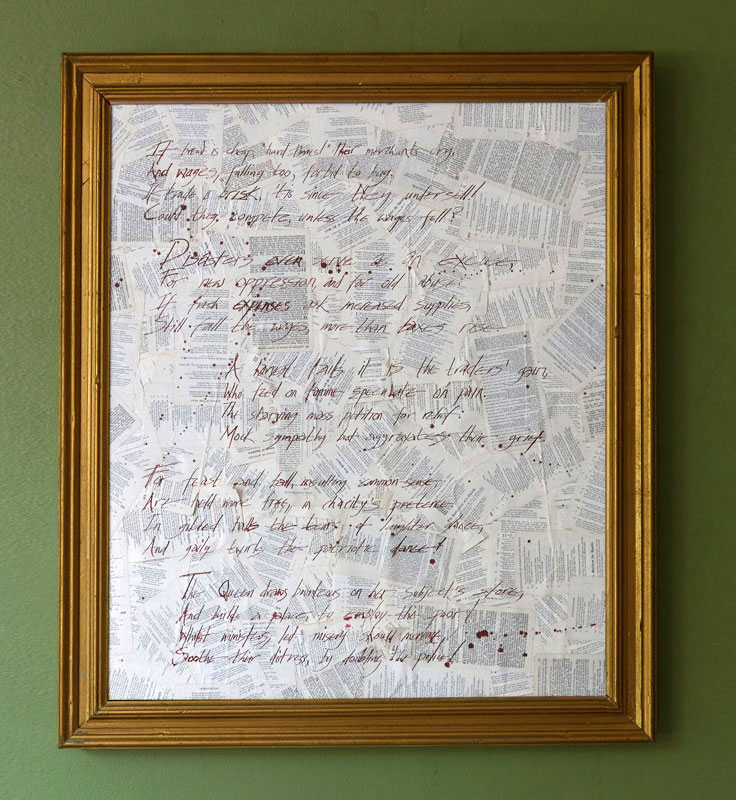In louring Hindostan London
Mixed media2017

Foreshadowing the Indian Rebellion of 1857 and 1947 Indian independence, his words attacking colonial rule can also be read as a description of the social ills and inequality of early 1800s Britain. These social conditions were increasingly leading to calls of revolt against the political classes who used politics to protect themselves, factory and land owners.










Alongside his poem Jones also sketched the built landscape created by the political and economic structures he critiqued and called for action against. His
1840s drawing A northern English town renders an imaginary, semi-satirical, industrial urban landscape.
My reimagining of this drawing extracts elements of contemporary London, sites of social destruction and phantasmagoric display, to consider parallels with our neoliberal politics, society & built space.
My reimagining of this drawing extracts elements of contemporary London, sites of social destruction and phantasmagoric display, to consider parallels with our neoliberal politics, society & built space.

